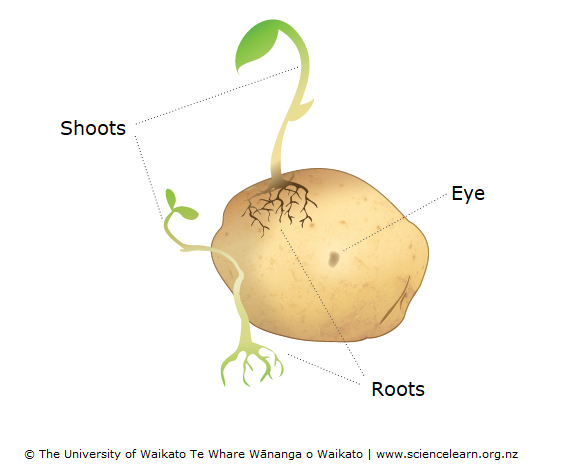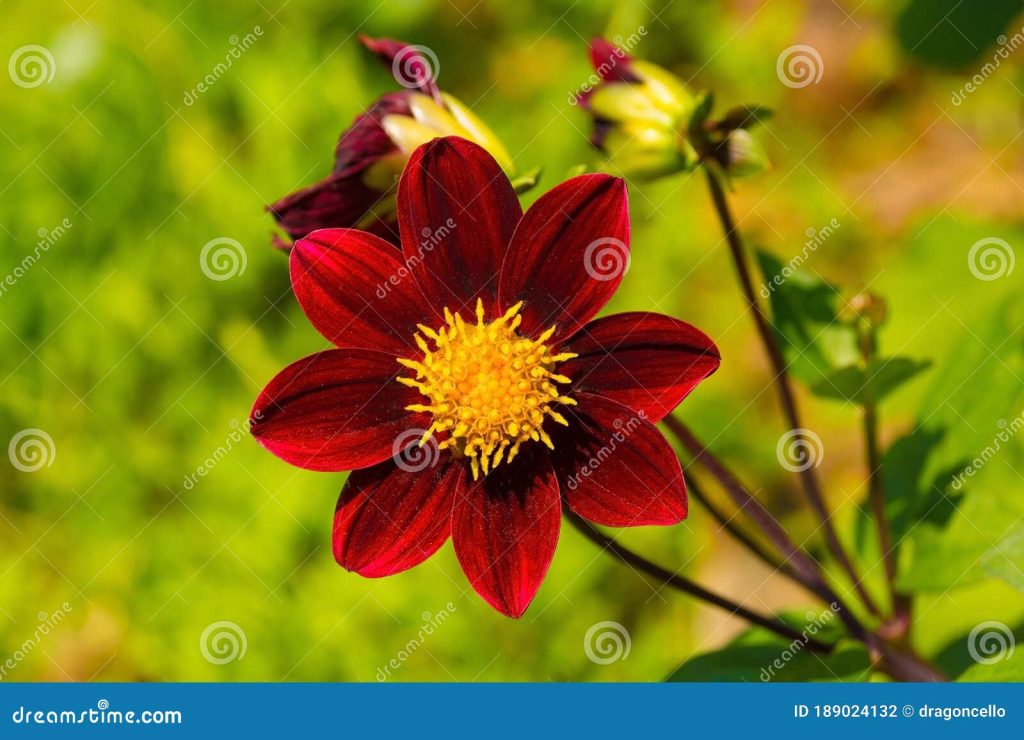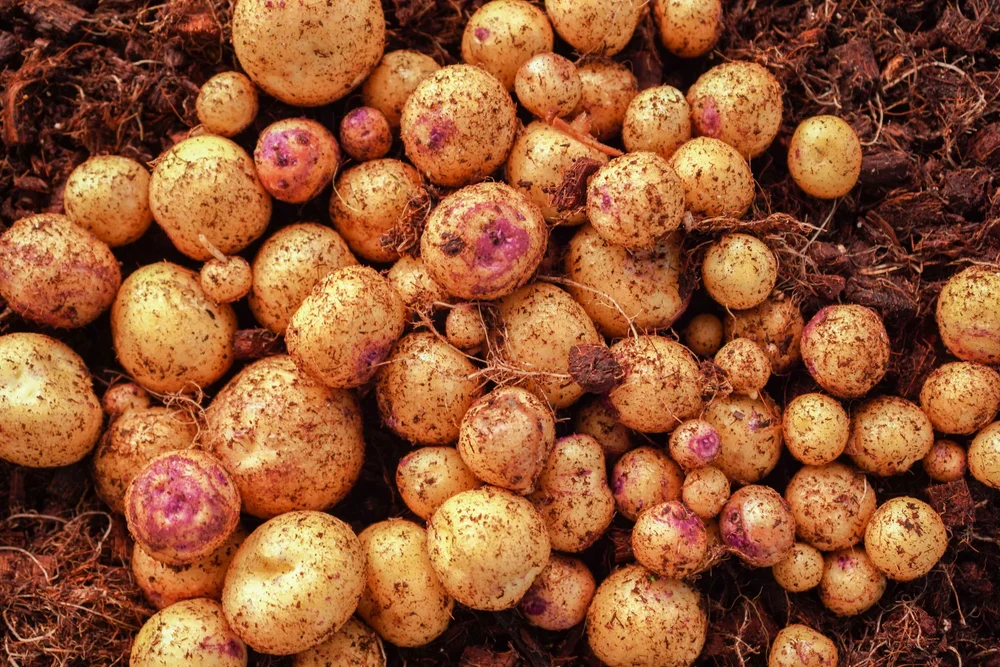In the ever-evolving world of horticulture and botany, understanding plant terminology is essential. One such term that often causes confusion is “tuber.” While many people may think of a tuber as simply a type of root or bulb, the reality is more nuanced. This article delves into the definition, characteristics, and significance of tubers, offering a clear and informative guide for gardeners, students, and anyone interested in plant biology.
Understanding the Basics of Tuber
A tuber is an underground storage organ found in certain plants. It is typically a thickened, fleshy part of the stem or root that serves to store nutrients and energy. These structures allow plants to survive harsh conditions, such as winter or drought, by providing a food reserve that can be used to regrow when favorable conditions return.
While the term “bulb” is often used interchangeably with “tuber,” they are not the same. A bulb is a compact, fleshy structure formed from layers of modified leaves, while a tuber is derived from a stem or rhizome. This distinction is crucial for accurate identification and cultivation.
What Makes a Tuber Unique?

Unlike bulbs or corms, tubers do not have a basal plate from which new shoots or roots grow. Instead, they produce nodes, buds, or “eyes” all over their surface. These buds can grow into new shoots or roots, making tubers highly effective for propagation.
One of the most well-known examples of a tuber is the potato. Potatoes are stem tubers, meaning they develop from the stem tissue of the plant. They can be cut into pieces, each containing at least two nodes, and planted individually to create new plants that are exact replicas of the parent.
Another example is the sweet potato, which is technically a tuberous root rather than a true tuber. Tuberous roots differ from true tubers in that they are usually propagated through division rather than cutting.
How Tubers Differ from Bulbs and Tuberous Roots

The confusion between tubers, bulbs, and tuberous roots is common, especially among beginners. Here’s a quick breakdown:
- Bulbs: These are typically composed of layers of fleshy leaves, like onions or tulips. They have a basal plate from which new growth emerges.
- Tubers: These are swollen stems or rhizomes that store nutrients. They lack a basal plate and instead have buds or eyes that can grow into new plants.
- Tuberous Roots: These are enlarged roots, like those found in dahlia or begonia plants. They are generally propagated through division rather than cutting.
It’s also important to note that not all tubers are edible. While potatoes, yams, and cassava are commonly consumed, other tubers like dahlias and begonias are grown primarily for ornamental purposes.
Common Plants with Tuberous Structures
Many familiar plants rely on tubers for survival and reproduction. Some of the most notable include:
- Potatoes – Stem tubers used for food
- Sweet Potatoes – Tuberous roots, though often mistaken for true tubers
- Dahlias – Ornamental flowers grown from tubers
- Begonias – Flowering plants with tuberous roots
- Peonies – Perennial plants that grow from tubers
- Cassava – A staple crop in many tropical regions
These plants demonstrate the versatility of tubers, which can serve both agricultural and aesthetic purposes.
Growing and Caring for Tuber Plants
If you’re interested in cultivating tuber plants, here are some key tips for success:
Planting
Tubers should be planted in well-draining soil with adequate sunlight. The depth and spacing will vary depending on the species. For example, potatoes are typically planted about 4 inches deep, while dahlia tubers may require slightly different conditions.
Watering
Consistent moisture is essential, but overwatering can lead to rot. Ensure the soil remains moist but not waterlogged.
Harvesting
For edible tubers like potatoes and yams, harvest occurs once the foliage has died back. This signals that the tubers have matured and are ready to be collected.
Storage
After harvesting, tubers can be stored in a cool, dry place to be replanted in the next growing season. Proper storage is crucial to prevent spoilage and maintain viability.
Benefits of Tuber Plants

Tuber plants offer several advantages:
- Perennial Growth: Many tuber plants regrow each year, making them ideal for long-term gardening.
- Easy Propagation: Tubers can be divided or cut into sections to create new plants, allowing for easy multiplication.
- Nutrient Storage: The ability to store carbohydrates and other nutrients makes tubers resilient during periods of dormancy.
- Versatility: From food crops to ornamental flowers, tubers play a significant role in agriculture and horticulture.
Frequently Asked Questions About Tuber
To further clarify the concept of tubers, here are answers to some common questions:
- Is a potato a tuber? Yes, a potato is a stem tuber.
- Are sweet potatoes considered tubers? No, they are technically tuberous roots.
- What is the difference between a bulb and a tuber? A bulb is made up of layered leaves, while a tuber is a swollen stem or root.
- Can I grow a dahlia from a tuber? Yes, dahlia tubers can be planted to grow new plants.
- Do garlic and onions count as tubers? No, they are bulbs.
Conclusion
Understanding what a tuber is goes beyond just identifying a plant’s underground structure. It involves recognizing the unique way these plants store nutrients, reproduce, and adapt to different environments. Whether you’re growing potatoes in your garden or admiring the vibrant blooms of a dahlia, knowing the role of tubers can enhance your appreciation of the natural world.
By distinguishing tubers from bulbs and other plant structures, you’ll be better equipped to care for and cultivate these fascinating organisms. As you explore the world of horticulture, remember that the humble tuber plays a vital role in both food production and ornamental gardening.
Stay updated with the latest news on horticultural trends, plant care, and botanical discoveries. Explore today’s headlines and deepen your knowledge of the plants that shape our world.
Author: Emily Johnson
Title/Role: Horticultural Expert and Content Writer
Credentials: With over a decade of experience in plant science and sustainable gardening, Emily specializes in translating complex botanical concepts into accessible, actionable advice for home gardeners and enthusiasts.
Profile Link: www.emilyjohnsonhorticulture.com
Sources:
1. University of Minnesota Extension – Understanding Plant Structures
2. Royal Horticultural Society – Tuber Care Guide
3. Botanical Society of America – Plant Terminology
Internal Links:
– How to Grow Potatoes at Home
– Top 10 Ornamental Plants for Your Garden
– The Science Behind Plant Dormancy
Schema Markup:
{
"@context": "https://schema.org",
"@type": "Article",
"headline": "What Does 'Tuber' Mean? A Comprehensive Guide",
"description": "Learn everything you need to know about tubers, including their definition, characteristics, and how they differ from bulbs and roots.",
"author": {
"@type": "Person",
"name": "Emily Johnson"
},
"publisher": {
"@type": "Organization",
"name": "Horticulture Today",
"logo": {
"@type": "ImageObject",
"url": "https://www.horticulturetoday.com/logo.png"
}
},
"datePublished": "2025-04-05"
}
Featured Snippet:
A tuber is an underground storage organ in certain plants, typically a thickened, fleshy part of the stem or root that stores nutrients and energy. Unlike bulbs, tubers do not have a basal plate and can be propagated by cutting. Examples include potatoes and dahlias.












More Stories
US Trending News: Exploring Zach Top Greensboro
US Trending News: The ‘Your Mom’ White House: A Trendy Take on Political Humor
US Trending News: Zach Lowe Twitter Updates and Insights